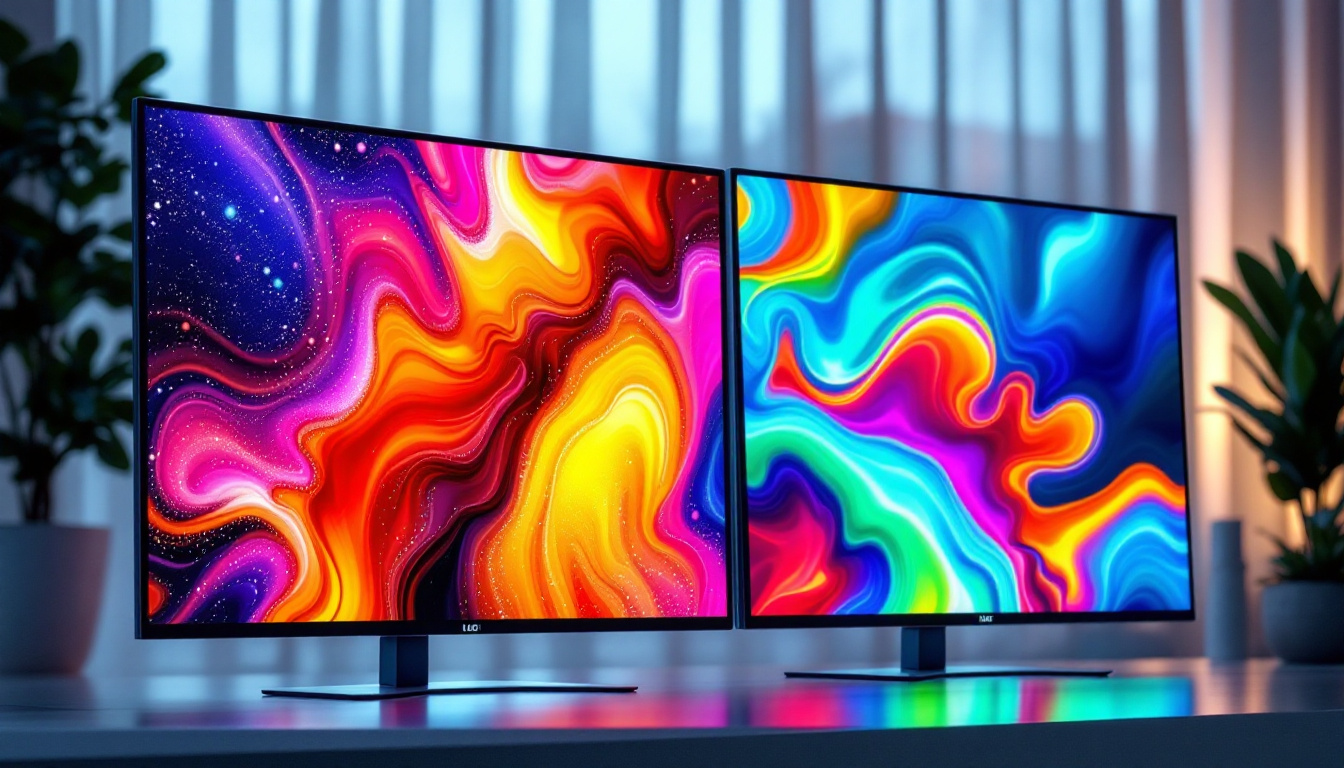Bezel LCD Display: LED Display Explained
In the world of modern technology, displays play a crucial role in how users interact with devices. Among the most common types of displays are LCD (Liquid Crystal Display) and LED (Light Emitting Diode) technologies. This article delves into the intricacies of bezel LCD displays, explores the differences between LCD and LED displays, and provides insights into their applications and advantages.
Understanding LCD Technology
Liquid Crystal Display (LCD) technology has been a staple in the display industry for decades. It utilizes liquid crystals that align when an electric current is applied, allowing light to pass through and create images. The fundamental components of an LCD include a backlight, liquid crystal layer, and a color filter.
Components of an LCD Display
At the heart of an LCD display are several key components that work together to produce clear images. The backlight is typically made of fluorescent tubes or LEDs, which provide the necessary illumination. The liquid crystal layer is sandwiched between two polarizing filters, and this is where the magic happens. When voltage is applied, the liquid crystals twist and allow varying amounts of light to pass through, creating the desired image.
The color filter adds another layer of complexity, enabling the display to produce a full spectrum of colors. By combining red, green, and blue light in varying intensities, LCDs can reproduce vibrant images that are essential for everything from television screens to computer monitors.
Types of LCD Displays
There are several types of LCD displays, each with its unique characteristics. The most common types include Twisted Nematic (TN), In-Plane Switching (IPS), and Vertical Alignment (VA) displays. TN panels are known for their fast response times, making them ideal for gaming. However, they often suffer from poor color reproduction and limited viewing angles.
IPS panels, on the other hand, offer superior color accuracy and wider viewing angles, making them a popular choice for professional applications such as graphic design and photography. VA panels strike a balance between the two, providing good contrast ratios and decent color reproduction, but they may not match the performance of IPS displays in terms of color accuracy.
The Role of Bezel in LCD Displays
The bezel is the outer frame that surrounds the display screen. While it may seem like a mere aesthetic feature, the bezel serves several important functions. It not only protects the display from physical damage but also houses essential components such as the display’s circuitry and connectors.
Design Considerations
In recent years, the design of bezels has evolved significantly. Manufacturers are increasingly opting for thinner bezels to create a more immersive viewing experience. This trend is particularly prominent in televisions and computer monitors, where a sleek design can enhance the overall aesthetic of a room or workspace.
However, the thickness of the bezel can also impact the durability and functionality of the display. A balance must be struck between aesthetics and practicality, ensuring that the display remains protected while still offering a modern look.
Bezel-less Displays
The concept of bezel-less displays has gained popularity, especially in smartphones and high-end televisions. These displays aim to maximize screen real estate by minimizing or eliminating the bezel altogether. While this design approach enhances the viewing experience, it also presents challenges in terms of structural integrity and manufacturing costs.
Bezel-less designs often require advanced engineering techniques to ensure that the display remains protected without a traditional bezel. This has led to innovations in materials and construction methods, resulting in displays that are not only visually stunning but also durable.
LED Technology: A Closer Look
While LCD technology has been around for a long time, LED technology has emerged as a significant advancement in display technology. LED displays are essentially a type of LCD that uses LEDs for backlighting instead of traditional fluorescent tubes. This change has led to improvements in brightness, contrast, and energy efficiency.
How LED Displays Work
LED displays operate on the same principles as LCDs, but the key difference lies in the backlighting. In an LED display, the backlight is composed of numerous tiny LEDs that can be individually controlled. This allows for better contrast ratios and deeper blacks, as the LEDs can be turned off in dark areas of the image, resulting in true black levels.
There are two primary types of LED backlighting: edge-lit and full-array. Edge-lit displays have LEDs positioned along the edges of the screen, while full-array displays have a grid of LEDs behind the entire screen. Full-array displays typically offer superior performance in terms of brightness and contrast but can be more expensive to produce.
Advantages of LED Displays
LED displays come with a host of advantages that make them a popular choice for consumers and businesses alike. One of the most significant benefits is their energy efficiency. LED technology consumes less power than traditional LCDs, making them more environmentally friendly and cost-effective in the long run.
Additionally, LED displays are known for their vibrant colors and high brightness levels. This makes them suitable for a wide range of applications, from outdoor signage to home entertainment systems. The improved contrast ratios also enhance the viewing experience, particularly in darker environments.
Comparing LCD and LED Displays
While LED displays are often considered a subset of LCD technology, there are distinct differences between the two that can influence purchasing decisions. Understanding these differences is essential for consumers looking to invest in a new display.
Image Quality
When it comes to image quality, LED displays generally outperform traditional LCDs. The ability to achieve deeper blacks and brighter whites gives LED displays a significant edge in terms of overall picture quality. This is particularly evident in high-definition content, where the nuances of color and contrast can greatly enhance the viewing experience.
However, it’s important to note that not all LED displays are created equal. Factors such as panel type, resolution, and processing technology can all impact image quality. Consumers should consider these variables when evaluating different display options.
Cost Considerations
Cost is another critical factor when comparing LCD and LED displays. Generally, LED displays tend to be more expensive due to their advanced technology and superior performance. However, prices have been decreasing over the years, making LED displays more accessible to a broader audience.
For budget-conscious consumers, traditional LCD displays may still offer a viable option, especially for less demanding applications. Understanding the specific needs and usage scenarios can help guide the decision-making process.
Applications of LCD and LED Displays
Both LCD and LED displays find applications across a wide range of industries and use cases. From consumer electronics to commercial displays, the versatility of these technologies makes them suitable for various environments.
Consumer Electronics
In the realm of consumer electronics, LCD and LED displays are ubiquitous. Televisions, computer monitors, tablets, and smartphones all utilize these technologies to deliver high-quality visuals. The demand for larger screens with better image quality has driven innovations in both LCD and LED technologies, resulting in stunning displays that enhance user experiences.
Gaming is another sector where display technology plays a crucial role. Gamers often seek displays with fast response times and high refresh rates, making TN and IPS panels popular choices. The advancements in LED technology have also led to the development of displays with higher refresh rates and improved color accuracy, catering to the needs of competitive gamers.
Commercial Displays
Beyond consumer electronics, LCD and LED displays are widely used in commercial settings. Digital signage, for example, relies heavily on these technologies to convey information and advertisements to customers. LED displays are particularly effective in outdoor environments due to their brightness and visibility, making them ideal for billboards and storefront displays.
In retail environments, LCD displays are often used for point-of-sale systems, enhancing customer engagement and providing interactive experiences. The versatility of these displays allows businesses to tailor their messaging and branding effectively.
The Future of Display Technology
As technology continues to evolve, the future of display technology looks promising. Innovations such as OLED (Organic Light Emitting Diode) and MicroLED are on the horizon, offering even greater advancements in image quality, energy efficiency, and design flexibility.
OLED Technology
OLED technology represents a significant leap forward in display technology. Unlike traditional LCDs, OLED displays do not require a backlight, as each pixel emits its own light. This allows for true blacks, vibrant colors, and ultra-thin designs. OLED displays have already made their mark in high-end televisions and smartphones, and their popularity is expected to grow in the coming years.
However, OLED technology is not without its challenges. Issues such as burn-in and longevity need to be addressed for widespread adoption. As manufacturers continue to refine OLED technology, it may become the standard for premium displays.
MicroLED Technology
MicroLED is another emerging technology that holds great promise. Similar to OLED, MicroLED displays consist of tiny individual LEDs that can be controlled independently. This allows for exceptional brightness, contrast, and color accuracy. Additionally, MicroLED displays are less prone to burn-in compared to OLED, making them a compelling option for various applications.
As research and development in the display industry continue, it is likely that both OLED and MicroLED technologies will coexist alongside LCD and LED displays, catering to different consumer needs and preferences.
Conclusion
In conclusion, understanding the differences between bezel LCD displays and LED displays is essential for making informed decisions in today’s technology-driven world. Each technology has its unique advantages and applications, making them suitable for various environments and use cases.
As display technology continues to evolve, consumers can expect even more innovations that enhance image quality, energy efficiency, and design flexibility. Whether in the realm of consumer electronics or commercial applications, the future of displays is bright, offering endless possibilities for users around the globe.
Discover Cutting-Edge LED Display Solutions
Ready to take your visual experience to the next level? LumenMatrix is at the forefront of LED display innovation, offering a wide array of solutions tailored to meet your needs. From captivating Indoor LED Wall Displays to dynamic Outdoor LED Wall Displays, and from versatile Vehicle LED Displays to sleek LED Poster Displays, our technology is designed to make your brand stand out. Engage your audience with our LED Sports Displays, dazzle them with our Floor LED Displays, or create a custom solution that’s as unique as your message. With our All-in-One and LED Transparent Displays, the possibilities are limitless. Embrace the future of visual communication with LumenMatrix and Check out LumenMatrix LED Display Solutions today to share your message with impact and clarity.































